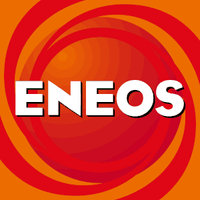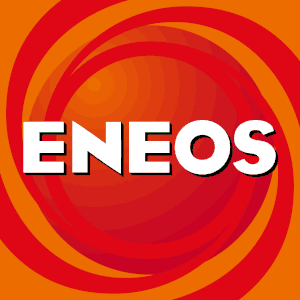
ENEOS Holdings Inc
TSE:5020


Utilize notes to systematically review your investment decisions. By reflecting on past outcomes, you can discern effective strategies and identify those that underperformed. This continuous feedback loop enables you to adapt and refine your approach, optimizing for future success.
Each note serves as a learning point, offering insights into your decision-making processes. Over time, you'll accumulate a personalized database of knowledge, enhancing your ability to make informed decisions quickly and effectively.
With a comprehensive record of your investment history at your fingertips, you can compare current opportunities against past experiences. This not only bolsters your confidence but also ensures that each decision is grounded in a well-documented rationale.
Do you really want to delete this note?
This action cannot be undone.

| 52 Week Range |
550.9
856.5
|
| Price Target |
|
We'll email you a reminder when the closing price reaches JPY.
Choose the stock you wish to monitor with a price alert.
This alert will be permanently deleted.
 ENEOS Holdings Inc
ENEOS Holdings Inc


 You don't have any saved screeners yet
You don't have any saved screeners yet

I would like to thank our shareholders and investors for your continued support and advice regarding the business activities of the ENEOS Group. Let me start explaining our business activities in accordance with the materials. Please see Page 3.
First, here are the financial results highlights. Operating income for Q1 FY 2022 was JPY 325.3 billion, an increase of JPY 163.3 billion year-on-year, of which approximately JPY 120 billion was accounted for by the positive inventory impact from higher oil prices and a weaker yen. Excluding inventory valuation, real operating income was JPY 117.2 billion, an increase of JPY 42.7 billion year-on-year. Although it took longer than expected to restart the refinery shutdown due to the earthquake off the coast of Fukushima prefecture in March of this year, as shown in the graph on the right, the utilization improved from the previous year, and export volume increased accordingly. We will continue to focus on reducing refinery troubles and ensuring safe and stable operations.
The advanced materials in the metals business continued to perform well from the previous year. On the other hand, the main reasons for the group's overall profit increase were due to the external environment, partly due to geopolitical factors, including soaring Asian export market prices, the impact of rising oil prices, including a positive time lag, and the depreciation of the yen.
Please see the bottom of the slide. We've decided to maintain our full year forecast unchanged from the May announcement. Although the actual operating income, excluding inventory valuation effects against the full year plan, reached 34%, as future resource price trend remains uncertain, we've decided to leave the May forecast numbers unchanged.
Please see Page 5. Let me explain the various factors. The Dubai crude oil price in brown started $102 per barrel at the beginning of Q1 FY 2022. Although the price temporarily fell to the $90 level due to the prolonged lockdown in Shanghai and other factors, it was $113 at the end of the period. And the average price for the period was $108, $41 higher year-on-year, sustaining the high level since last year. But since July, the price has turned downward and is currently around $95 or $96.
The LME copper price in yellow started at $4.65 per pound at the beginning of the period, and it ended at $3.74 and now average $4.32 for the period, down $0.08 from the previous year. The price remained high in April due to the surge in commodity markets following Russia's invasion of Ukraine from the end of the previous period but fell sharply from May onward due to growing concerns of a global economic slowdown caused by the economic slowdown in China and monetary tightening in various countries. The price is currently around $3.60.
The exchange rate shown in green depreciated rapidly against the yen on the backdrop of the expected interest rate differential expansion between Japan and the U.S. And the average exchange rate for the period was JPY 130 to dollar, JPY 20 weaker from the previous year. The various factors during Q1 were very volatile, partly due to geopolitical factors, and we are paying particular attention to future trends.
Then please turn to Page 6. The clean fuel margin index on the left. It averaged about JPY [ 4 2 5 ] better than the previous year. However, this was mainly due to a temporary positive time lag caused by crude oil price fluctuations. And the PX market on the right. The margin index continues to stay low due to the impact of supply and demand easing, resulting from the new plant operation in China. The index shown in the graph does not take into account the deterioration in fuel costs due to the rising crude oil prices. So it appears to be better than the previous year, but the margin after taking fuel expense into account has shrunk.
Regarding Pages 8 and 9, allow me to skip the explanation since it duplicates the financial highlights at the beginning and the step chart starting on the next page.
Please see Page 10. Excluding inventory valuation effect in the energy business, operating income was JPY 39.3 billion, up JPY 31.8 billion year-on-year. Here is a breakdown by subsegment. Petroleum products recorded a year-on-year increase of JPY 37.7 billion. The volume impact was a plus JPY 3.3 billion as a result of an increase in demand due to the easing of COVID impacts and expansion of export volume by about 1.5 million kiloliter year-on-year due to improved utilization. Margins and expenses were plus JPY 34.4 billion due to better clean fuel and export margins resulting from improved refinery utilization compared to the previous year and a time lag associated with higher crude oil prices and soaring Asian market prices despite the prolonged impact of the outbreak that occurred in March.
Next, petrochemical. It posted a year-on-year increase of JPY 2.7 billion. The main factor was the margin improvement for propylene and ethylene. In PX and benzene, the environment remained difficult due to the easing supply-demand balance I mentioned earlier. In electric power, the increase in procurement cost due to higher JEPX prices resulted in a negative JPY 9.3 billion.
Regarding the impact of the JEPX price hikes. As the power generation at refineries is included as a positive factor in petroleum products, it was partially offset in the energy segment as a whole. In materials, margins for lubricants deteriorated mainly due to a time lag, while the elastomer business, which began operating as ENEOS materials on April 1, 2022, contributed to a profit increase, resulting in a year-on-year increase of JPY 700 million.
Next, please see Page 11. Operating income in the E&P business was JPY 27.9 billion, an increase of JPY 12.6 billion from the previous year. Resource price effects were positive JPY 16.8 billion due to significant increase in oil and gas prices. In addition, foreign exchange and expenses increased by JPY 1.9 billion due to the impact of yen depreciation. The negative JPY 5 billion impact of the sales of the U.K. business is due to the absence of profit from the U.K. business, which was divested last year.
Please refer to Slide 12. Operating income in the metals business increased JPY 0.3 billion year-on-year to JPY 41.1 billion. Operating income in functional materials, thin film materials and others was up JPY 7.1 billion due to factors such as the weaker yen and increased sales on the back of higher demand in the high functional IT field. In mineral resources, production at the Caserones copper mine increased by 7,000 tons to 34,000 tons, recovering from the last year's COVID impact, but overall production was minus JPY 1.8 billion, partly due to lower copper prices and the impact of troubles at the Los Pelambres copper mine.
Smelting and recycling. It was up JPY 1.1 billion due to the impact of the yen depreciation and higher sulfuric acid prices, which offset lower precious metal prices. Nonallocated corporate expenses and other were minus JPY 6.1 billion, mainly due to the impact of internal transactions on the consolidated financial statements.
Please see Page 13. This is the balance sheet and cash flow. First is the cash flow on the right. See the figures excluding the impact of lease accounting circled by the dotted line on the right. Operating cash flow in Q1. Operating income, excluding inventory valuation, was JPY 117.2 billion, and depreciation and amortization was JPY 64.9 billion, while an increase in working capital due to higher resource prices and income tax payments resulted in working capital and other to be a negative JPY 347.6 billion with a cash outflow of JPY 165.5 billion. Investing cash flow was a net cash outflow of JPY 123.2 billion, resulting in a free cash outflow of JPY 288.7 billion. Net cash flow, including dividend payments and share buybacks, was a net cash outflow of JPY 396.1 billion.
Next is the balance sheet. Please see the table on the left. As indicated by the dotted line in the upper right, net interest-bearing debt, which is interest-bearing debt minus cash on hand as of June end, was affected by the negative net cash flow of JPY 396.1 billion mentioned earlier and JPY 50.3 billion in debt succession of the elastomer business whose acquisition was completed in April to increase by JPY 462.2 billion from the end of last year to JPY 2,647.2 billion. As a result, net D/E ratio increased to 0.77x from 0.68x at the end of the previous year. The net debt equity ratio will be 0.69x if the equity nature of the hybrid bonds issued last June was factored in.
Please refer to Page 15 and beyond later as reference information on the assumptions, sensitivities and major topics since April onwards.
This concludes my explanation. Thank you very much for your attention.